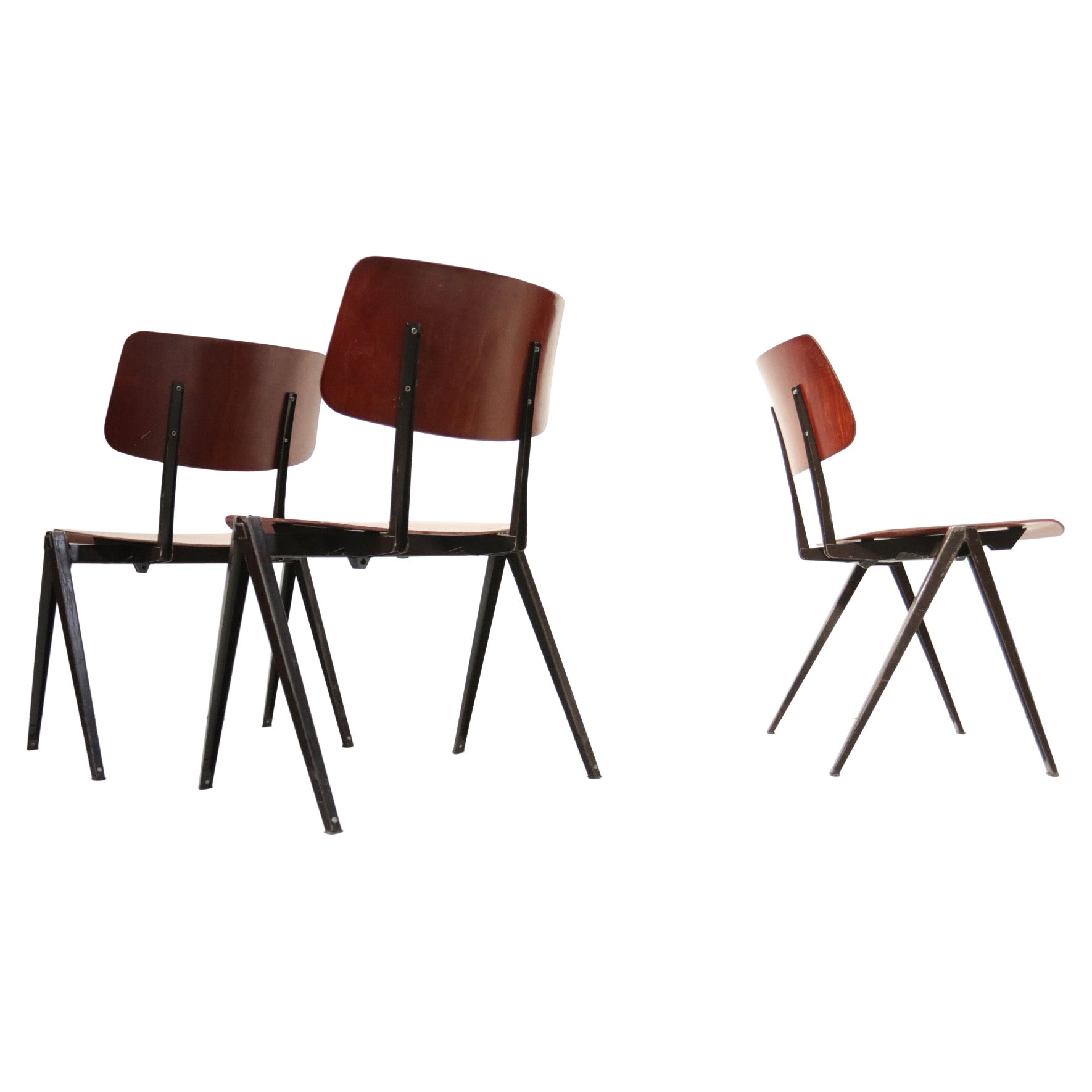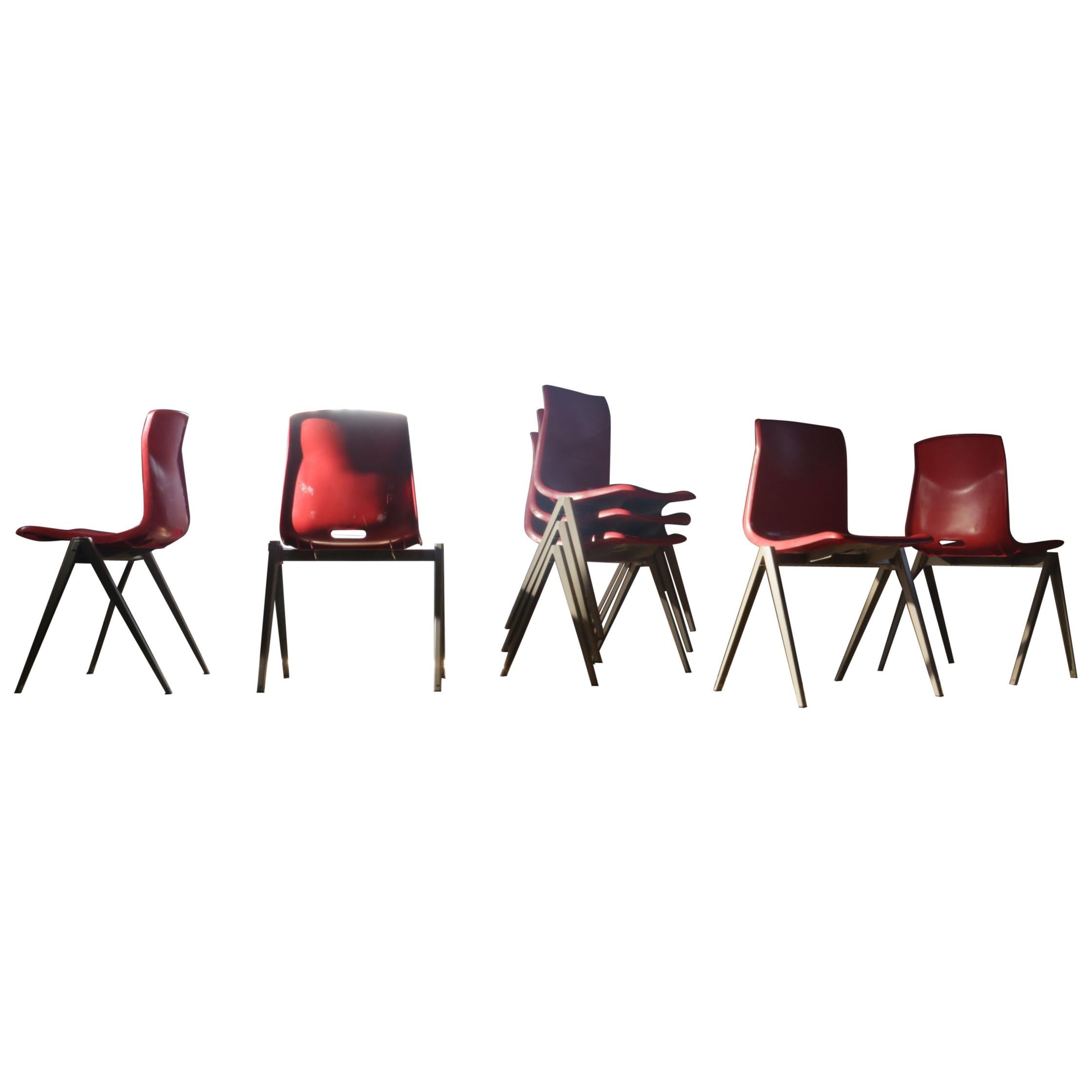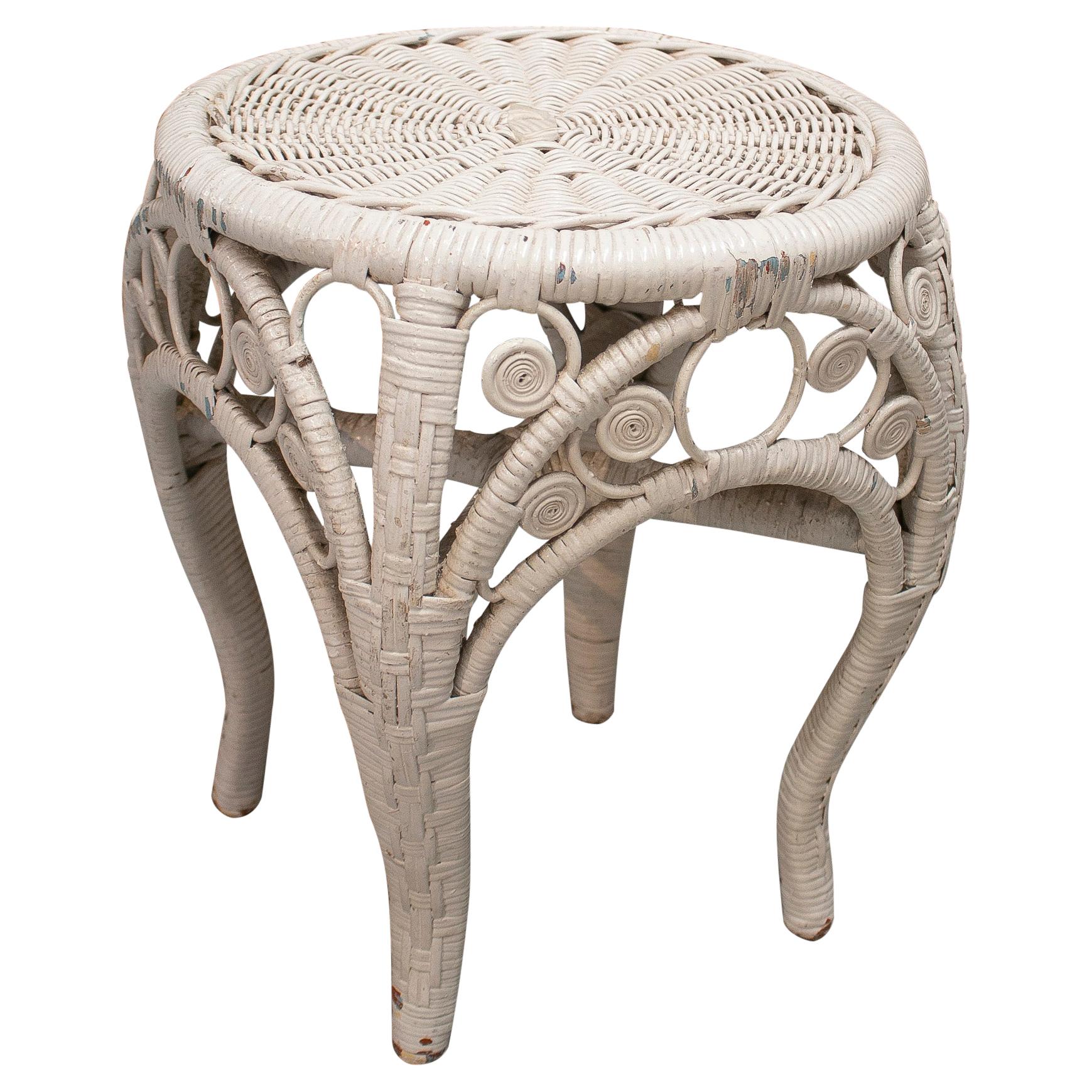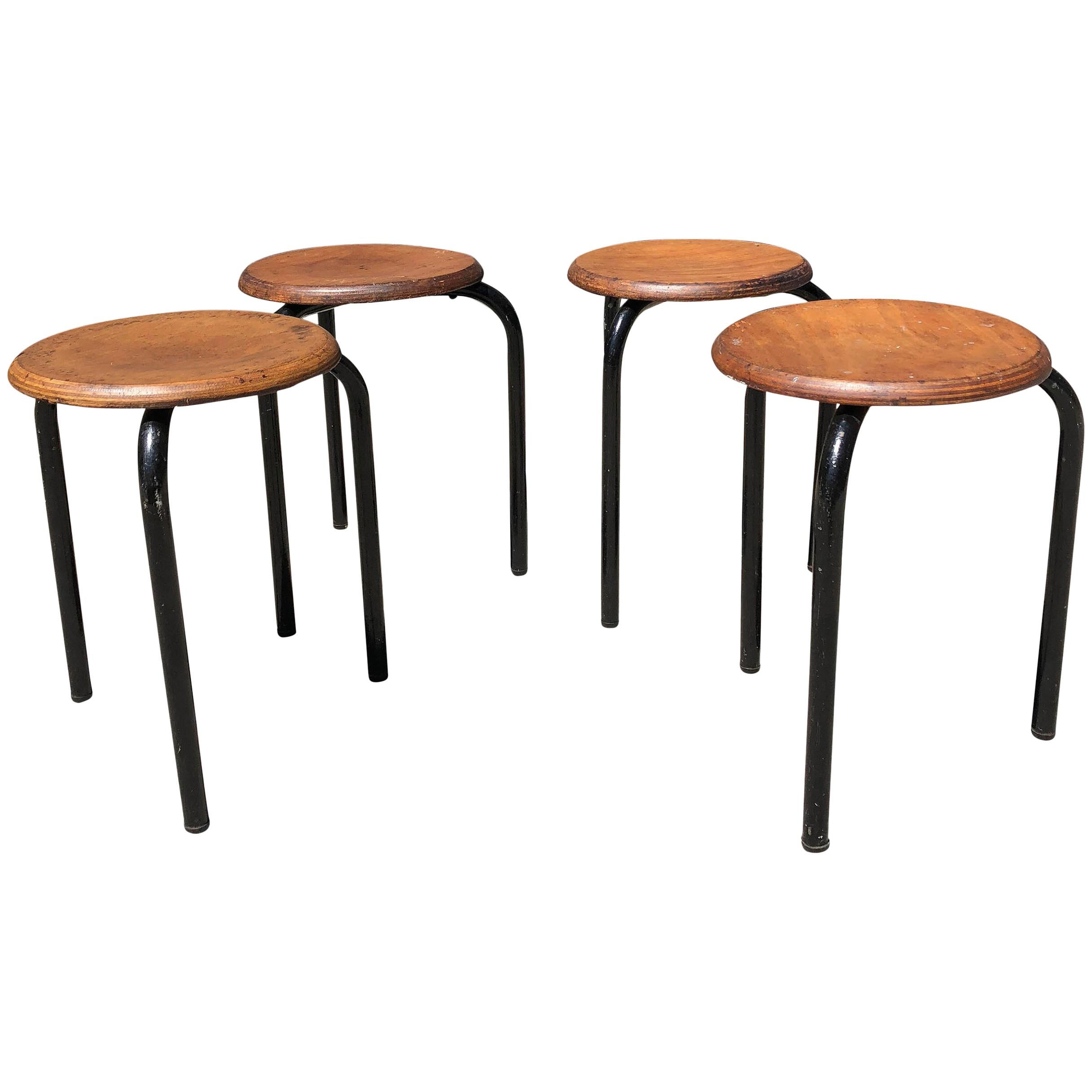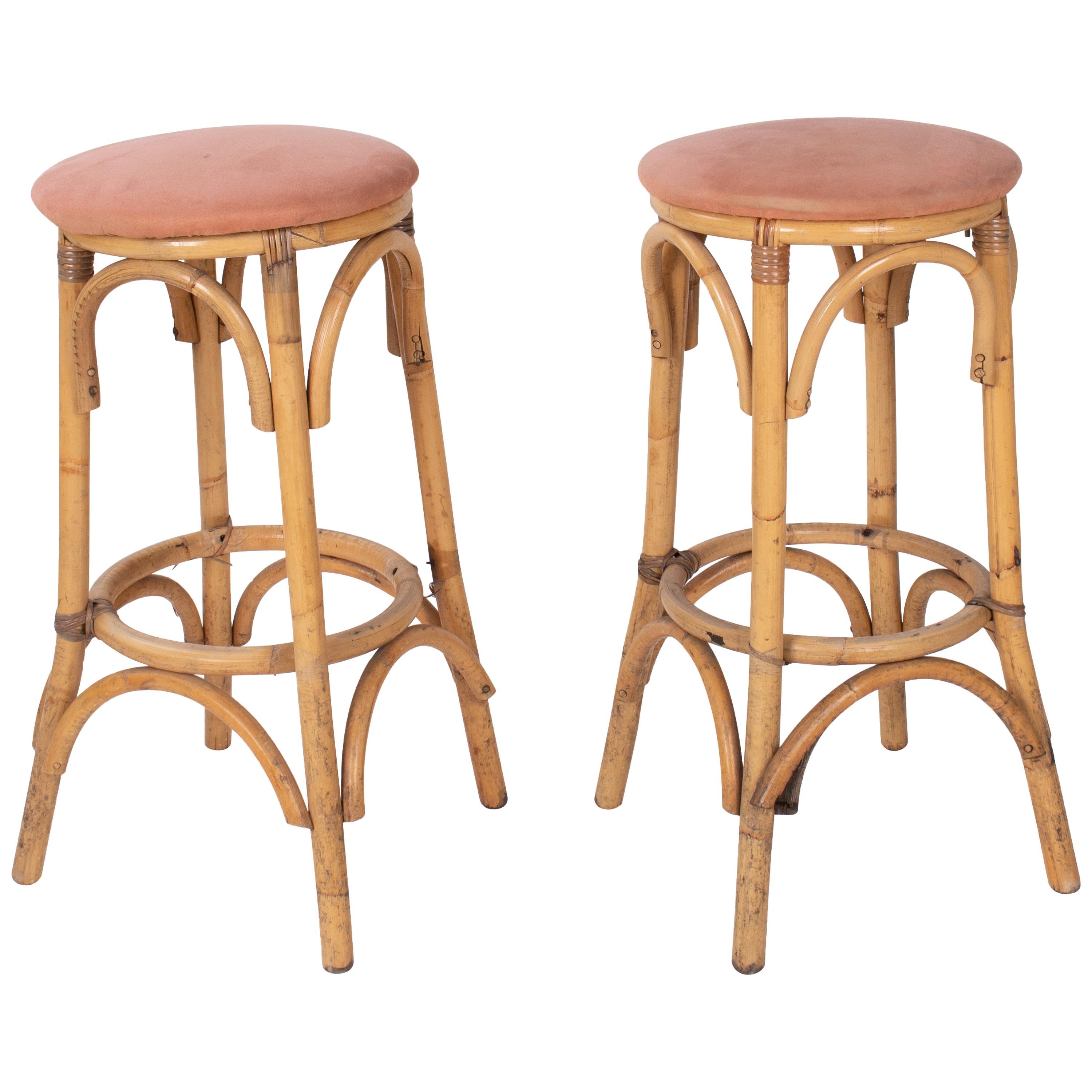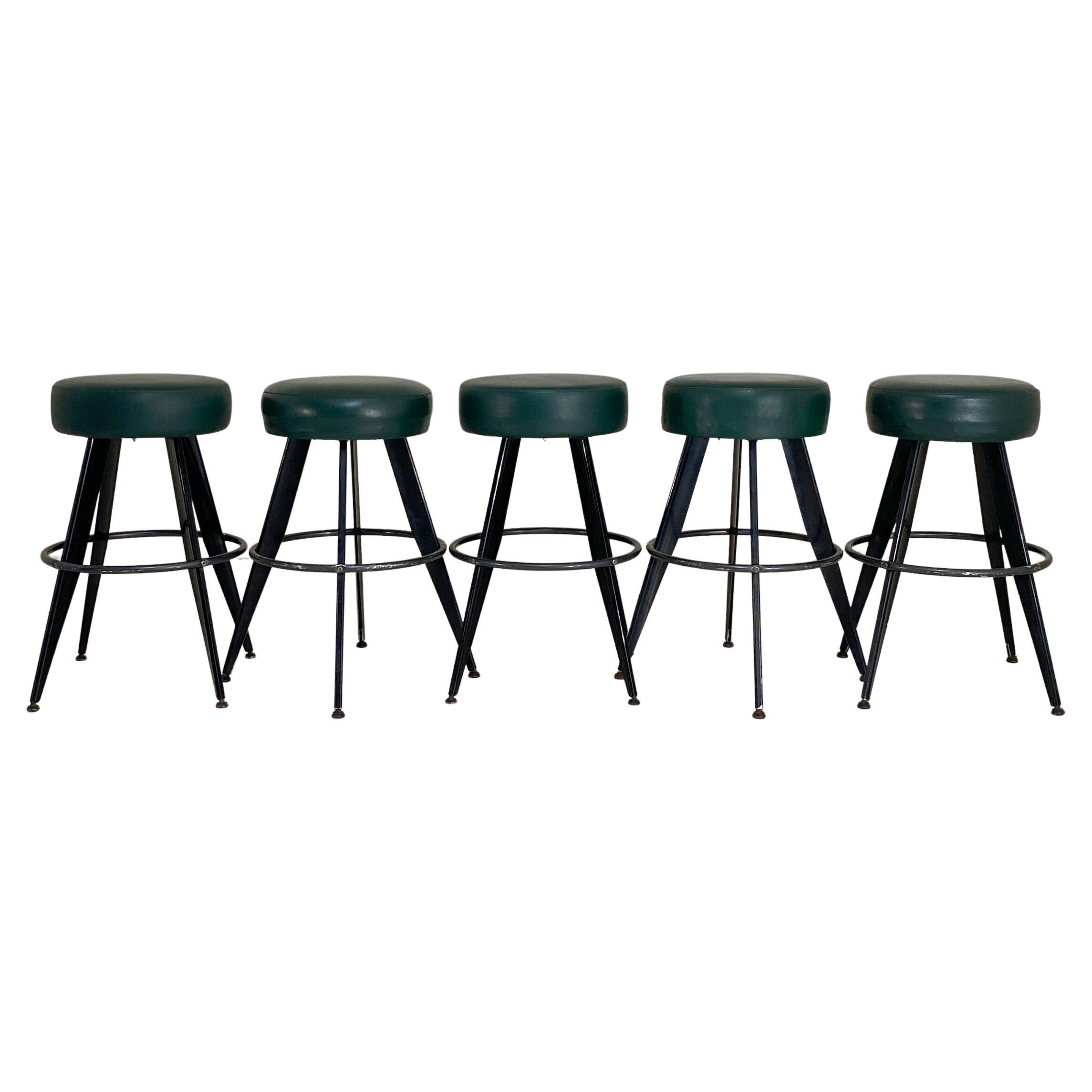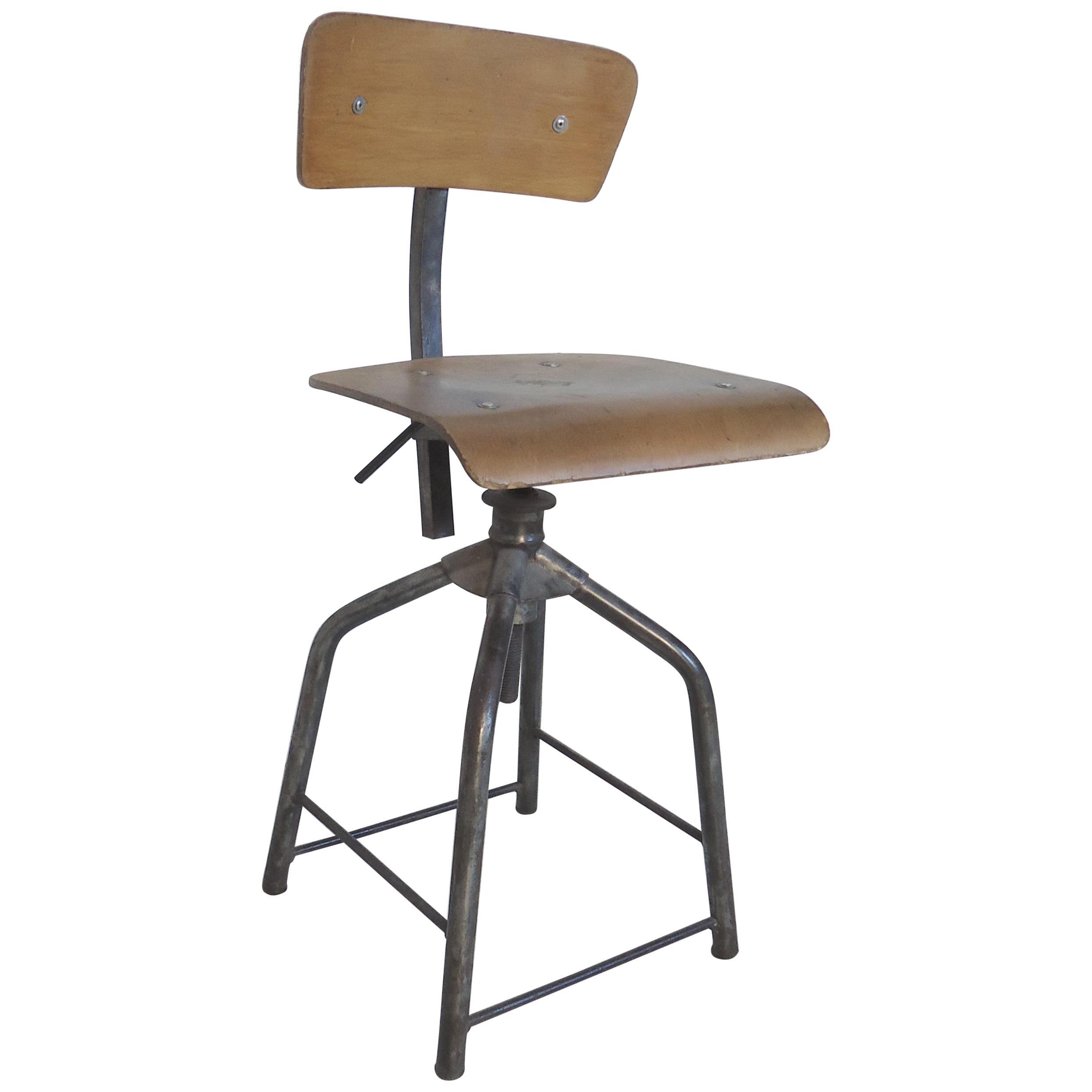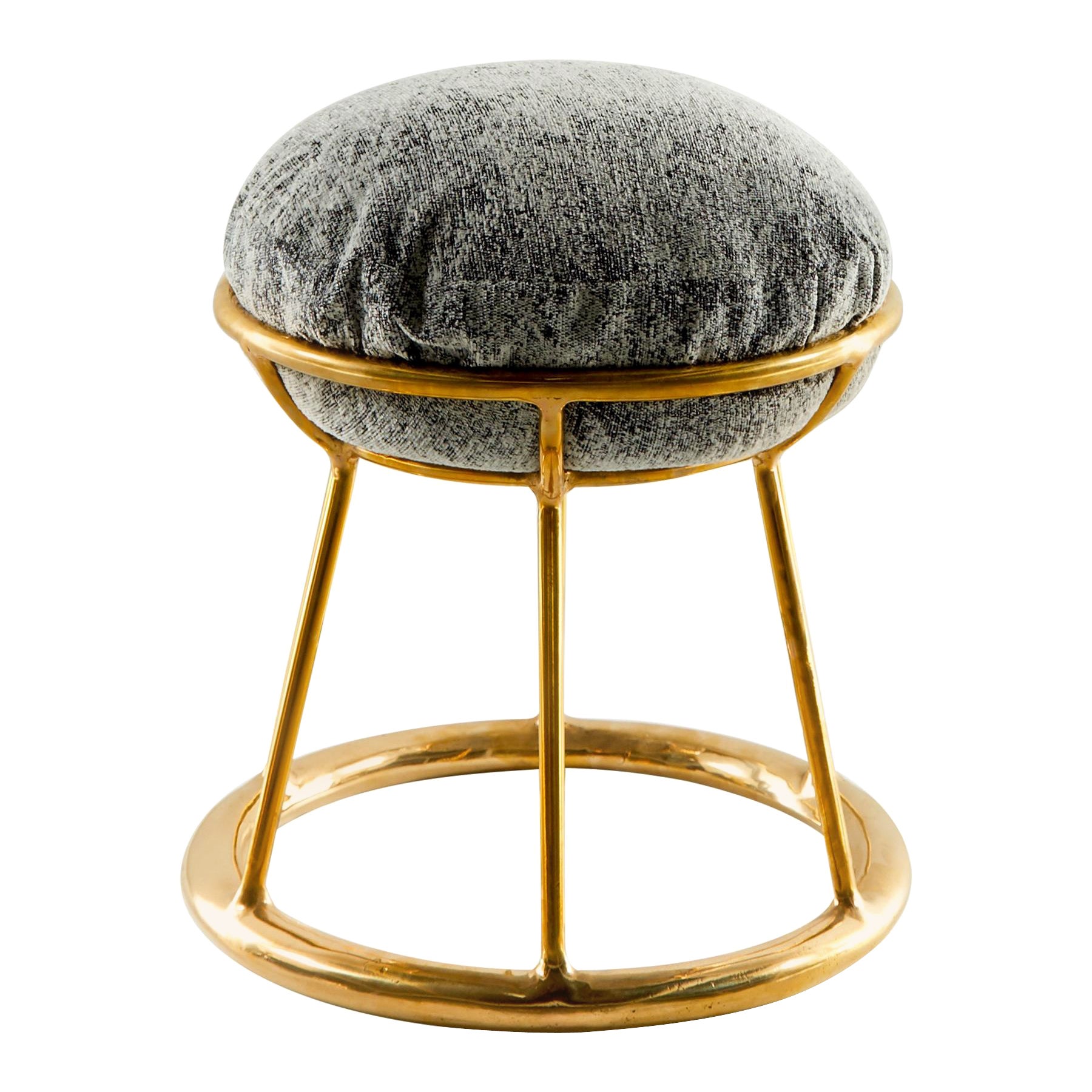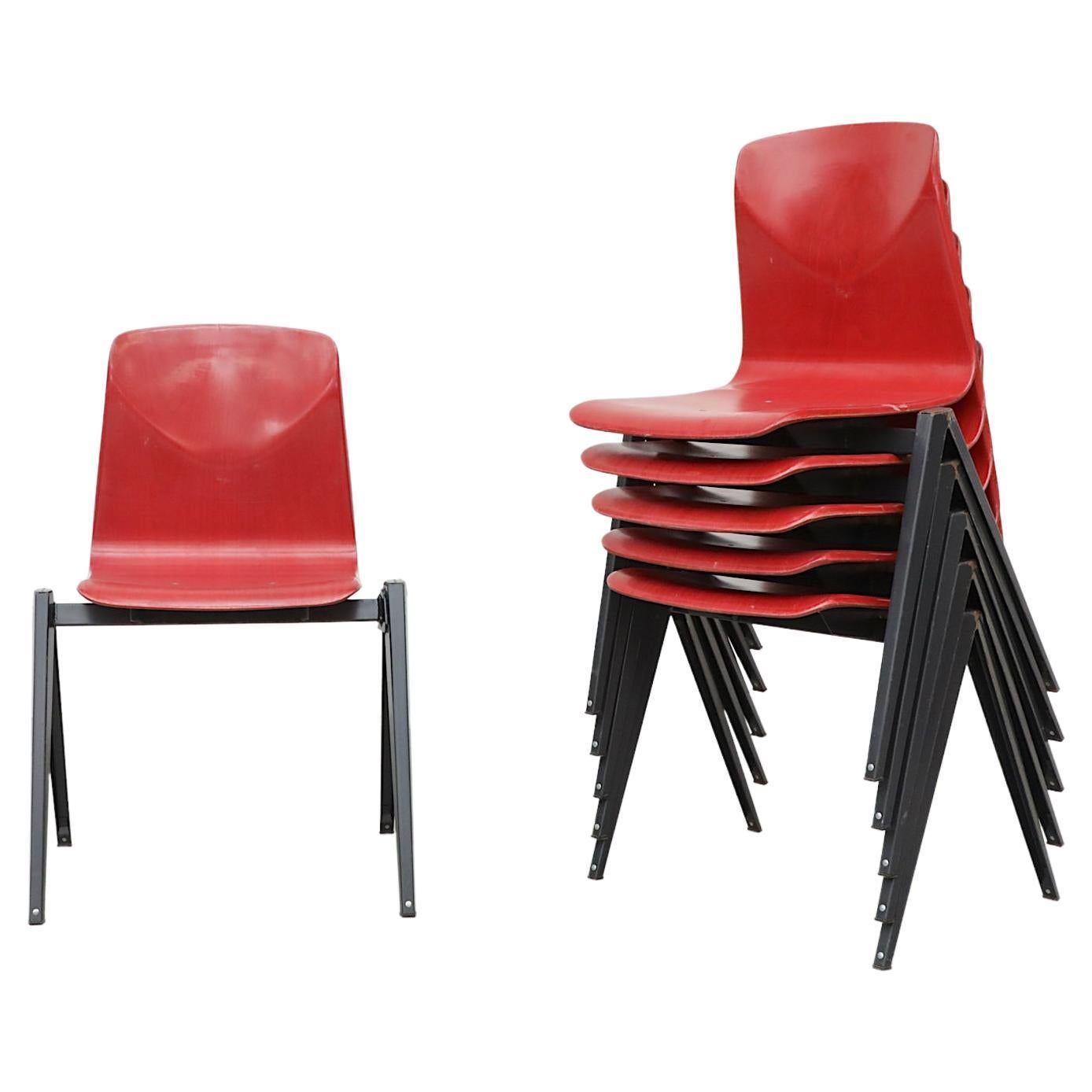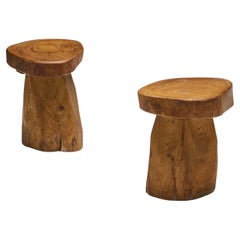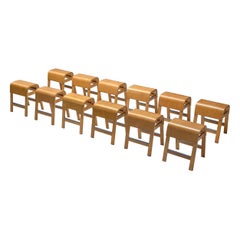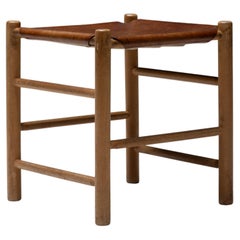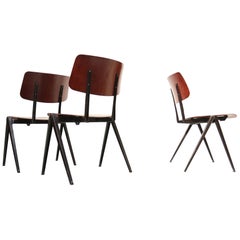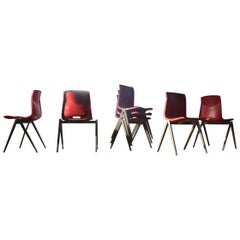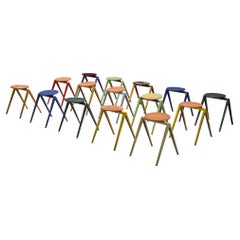
Galvanitas Low Stools Prouve Style, 1970s
View Similar Items
Want more images or videos?
Request additional images or videos from the seller
1 of 17
Galvanitas Low Stools Prouve Style, 1970s
About the Item
- Creator:Galvanitas (Manufacturer)
- Similar to:Jean Prouvé (Designer)
- Dimensions:Height: 18.51 in (47 cm)Width: 14.97 in (38 cm)Depth: 11.03 in (28 cm)Seat Height: 18.51 in (47 cm)
- Style:Industrial (Of the Period)
- Materials and Techniques:
- Place of Origin:
- Period:
- Date of Manufacture:1970s
- Condition:Wear consistent with age and use.
- Seller Location:Antwerp, BE
- Reference Number:1stDibs: LU933429366782
About the Seller
4.8
Gold Seller
These expertly vetted sellers are highly rated and consistently exceed customer expectations.
Established in 2008
1stDibs seller since 2012
983 sales on 1stDibs
Typical response time: 10 hours
More From This SellerView All
- Monoxylite Stools in the Style of Zanine Caldas, Brazil, 1970sBy José Zanine CaldasLocated in Antwerp, BEHandcarved monoxylite stools, a testament to 1970s Brazilian craftsmanship and the timeless allure of José Zanine Caldas. The natural beauty of the wood grain takes center stage, an ...Category
Vintage 1970s Brazilian Brutalist Stools
MaterialsWood
- Scandinavian Design Stools for IKEA, Swedish, 1970sBy IKEALocated in Antwerp, BEIkea manufactured wooden stools. A great piece of Swedish Mid-Century Modern design. Perfect for a dining area or office space where the number of seats change from day to day. Can b...Category
Vintage 1970s Swedish Mid-Century Modern Stools
MaterialsWood
- Cognac Mid-Century Modern Stool, France, 1950sLocated in Antwerp, BEMid-century modern stool, crafted in France during the 1950s. The design boasts a sturdy framework composed of elegantly shaped wooden cylinders, ensuring exceptional comfort. The seating is adorned in a rich, dark cognac leather that showcases a remarkable patina, adding a touch of timeless sophistication. We have one stool available, in perfect condition. Check out our Goldwood storefront for more mid-century pieces and complete the set with three cognac dining chairs.Category
Vintage 1950s French Mid-Century Modern Stools
MaterialsLeather, Wood
- Rustic Wabi Sabi Stool, Four Legged, France, 1940sLocated in Antwerp, BERustic; Wabi Sabi; Stool; Four-Legged; France; 1940s; Rustic wabi-sabi wooden stool with a four-legged base and an oval-shaped seat. With its remarkable patina, the design reminds...Category
Vintage 1940s French Rustic Stools
MaterialsWood
- Functional Art Chair / Stool "Plaster Whip" by Lionel JadotBy Lionel JadotLocated in Antwerp, BE"Plaster Whip" sculpture by Lionel Jadot A stool made of leftover plaster vats from a molding company, scrap metal, leather whips from the 1950s and a bodybuilder’s belt from the 1930s Collectible Design / Functional art , Lionel Jadot for Everyday Gallery, Belgium 2020 Born in Brussels in 1969, Lionel Jadot is an interior designer, artist, designer, filmmaker, adventurer. But all at once, preferably. Lionel Jadot is firing on all cylinders. ‘I never throw anything, I pick up everything. Not having a green thumb, I’m trying cuttings, weddings against nature. I never forget a line.’ He’s inviting us in subtle, off-beat worlds, on the edge of reality. Its material is made of dilated time. A wandering spirit, he seeks a protective balance in a hostile world. It is his constant questioning: what happens to the place where we live? For Lionel Jadot, everything is object, everything is history. He draws from other places, other times, and seeks what’s linking them. He sews, stitches, unpicks, blends materials, combines eras. He will enshrine some wood essence in metal, some mineral in a plant, the old in the new. ‘I take extra care to the joint between two materials.’ With him, there is always some play in the parts, as in a piece of machinery. From a kingdom to another, he provokes organic, viral growths, generating energy. Linking past and future, he never forgets a line. ‘I accumulate them.’ He’s inviting us in subtle worlds, off-beat, on the edge of reality. Are we in 1930 or in 2030? Both, no doubt. Its material is made of dilated time. The eye goes hand in hand with the ear. ‘When I walk into a place, I listen to the good (or bad) it does to me. An ineffable feeling.’ He recreates mutant buildings, like the future Royal Botanique, a 5 stars hotel housed in the Church of the Gesu, a former convent behind a 1940 façade. He talks about a ‘hotel object’, which he holds and turns around in his hand. A wandering spirit, he’s flirting with retro-futurism. The Jam, another hotel, is intended for urban travelers, fans of swiftness, fluidity and hospitality. He designs interiors as a set of objects: a motorcycle cut in concrete becomes a bar counter. He finds gothic cartoon echoes, from the likes of Moebius, Alejandro Jodorowsky, Enki Bilal, sets from Garage Hermétique and Blade Runner, a protective balance in a hostile world. Discovering Jadot’s little cosmos of collected and accumulated goods, it becomes clear that every element has its own story. I tried to collect them and in turn, devour them in the coming paragraphs. But first: the show is best experienced seated, barring the distinction between object of use and object of attention, they invite for different types of conversation. The seats, chairs, thrones all make us think of our own physical comportment, and of how the seat lends grandeur to the person sitting on it, by crowning its presence. The crackling floor, the felt walls and the diffuse light slow you down into an oddly absorbing environment, in which you are left puzzled. In the eclectic collages of objects, bits and pieces collected all over the world come together in ways practical, and logical, though possibly only in the artist’s mind. All his finds eventually seem to fall into place. Starting with the mere conception of a chair, rather than with a set-out plan or sketch, the works are intuitively construed out of an archive that one can only imagine the dimensions of. Things forgotten by others, precious for him, were all once designed for their own purpose. Here they find their fit as a base, a closing system or a balancing element. The first piece that opens the exhibition, the most throne-like of all seats in the show, builds around a chair of his grandmother, protected by mops, and harassed with bed springs. As you enter the space, you pass by a shell leaning over a yellow seat that stems from his old Mustang, and find a white stool piece with Mexican leather dog training whips— the white building blocks of which turn out to be dried molding material, as found and broken out of a bucket by workers every morning. Further, the stone piece that reminds one of the stone age, is indeed made of 400 million old rocks, and the soft seats are lent from construction, where these strokes of textile carry up the heaviest goods. In the corner — but as you walk this walk please be seated on any of the thrones and experience the work for a moment— the green fluffy cover is made by XXXX who remakes cartographies of warzones, one of which is here mounted on a flexible fishing chair. On an experience level, the conversation chair enhances self-confidence, while putting you literally in a good spot with the person you’re conversing with. The lamp perfectly shows the playful Cadavre Exquis...Category
2010s European Chairs
MaterialsLeather, Plaster
- Pierre Jeanneret Chandigarh Prototype Stool, Woven Linen Seating, India, 1960'sBy Pierre JeanneretLocated in Antwerp, BEPierre Jeanneret, Chandigarh stool, study model for Chandigarh, prototype piece, woven linen seating Designed by Corbusier cousin, Pierre Jeanneret, F...Category
Mid-20th Century Mid-Century Modern Stools
MaterialsLinen, Wood
You May Also Like
- Dutch Industrial Design Prouve Style School Chairs S21 Compas GalvanitasBy Galvanitas, Wim Rietveld, Friso Kramer, Jean ProuvéLocated in Boven Leeuwen, NLNice batch of original S21 stackable and switchable school chairs made by Galvanitas from the 60s - 70s in the style of the designs of Friso Kramer, Wim Rietveld and Jean Prouvé. Wha...Category
Vintage 1970s Dutch Industrial Chairs
MaterialsMetal
- 10 x Dutch Industrial Design Prouve Style School Chairs S21 Compas GalvanitasBy Galvanitas, Wim Rietveld, Friso Kramer, Jean ProuvéLocated in Boven Leeuwen, NLLarge batch of Original S21 stackable and switchable school chairs made by Galvanitas from the 60s - 70s in the style of the designs of Friso Kramer, Wim Rietveld and Jean Prouvé. W...Category
Vintage 1970s Dutch Industrial Chairs
MaterialsMetal
- Industrial Piramid Stacking, School Chairs Galvanitas S22 Prouve StyleBy GalvanitasLocated in Boven Leeuwen, NLIndustrial Galvanitas S22 Compass / Pyramid School chairs from the 1960s. The chair has a light gray coated metal frame, a plastic molded seat with closed shell in a red color. This legs are very easy stack able on each other. In this way you create a fixed row of seats...Category
Vintage 1970s Dutch Industrial Chairs
MaterialsSteel
- 1970s Spanish Hand Woven Wicker Painted Round Low StoolLocated in Marbella, ESVintage 1970s Spanish hand woven wicker painted round stool.Category
Late 20th Century Spanish Stools
MaterialsWicker
- 1970s Spanish Hand Woven Wicker Painted Round Low StoolLocated in Marbella, ESVintage 1970s Spanish hand woven wicker painted round stool.Category
Late 20th Century Spanish Stools
MaterialsWicker
- Midcentury Jean Prouvé StoolsBy Jean ProuvéLocated in BROOKLYN, NYAtelier Jean Prouvé designed for the Lycée Fabert, Metz. France, 1930s. Lacquered metal base and turned plywood seat. All have markings on the underside. These wonderful stools also ...Category
Mid-20th Century French Mid-Century Modern Stools
MaterialsSteel
Recently Viewed
View AllMore Ways To Browse
Atelier Prouve
Low Wooden Stool
Prouve Style Chair
Prouve Stool
Compass Dining Chairs
Vintage Dutch Tube
Round Low Stool
Vintage Industrial Wooden Stool
Jean Prouve Stool
Tiny Stool
Low Industrial Stool
Vintage Wooden High Stool
Metal Tube Dining Chair
Metal Tube Dining Chairs
Prouve Compass
Jean Prouve Style Chair
Compass Jean Prouve
Prouve Round
